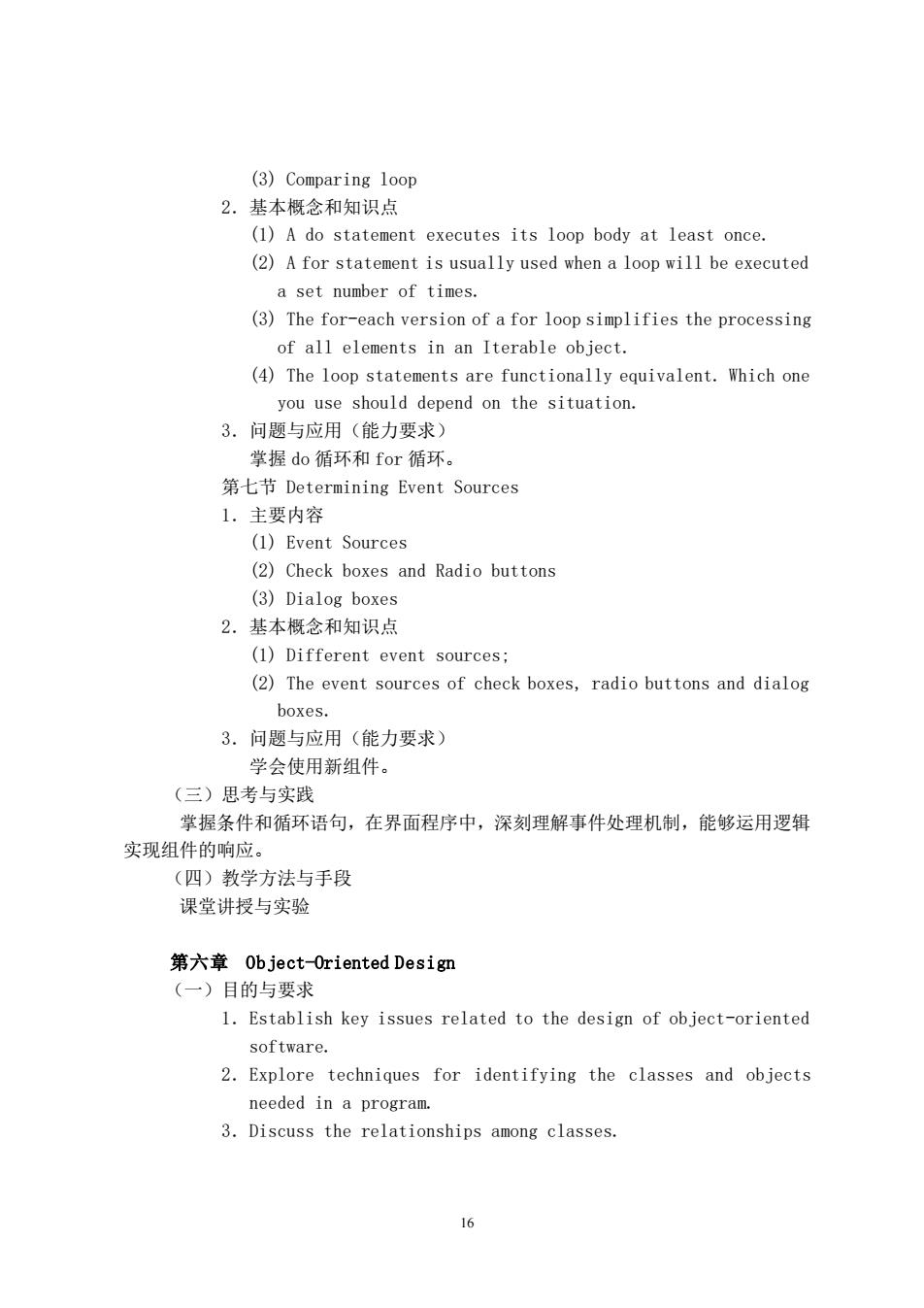正在加载图片...

(3)Comparing loop 2.基本概念和知识点 (1)A do statement executes its loop body at least once. (2)A for statement is usually used when a loop will be executed a set number of times. (3)The for-each version of a for loop simplifies the processing of all elements in an Iterable object. (4)The loop statements are functionally equivalent.Which one you use should depend on the situation. 3.问题与应用(能力要求) 掌握do循环和for循环。 第七节Determining Event Sources 1.主要内容 (1)Event Sources (2)Check boxes and Radio buttons (3)Dialog boxes 2.基本概念和知识点 (1)Different event sources; (2)The event sources of check boxes,radio buttons and dialog boxes. 3.问题与应用(能力要求) 学会使用新组件。 (三)思考与实践 掌握条件和循环语句,在界面程序中,深刻理解事件处理机制,能够运用逻辑 实现组件的响应。 (四)教学方法与手段 课堂讲授与实验 第六章Object-Oriented Design (一)目的与要求 1.Establish key issues related to the design of object-oriented software. 2.Explore techniques for identifying the classes and objects needed in a program. 3.Discuss the relationships among classes. 16 16 (3) Comparing loop 2.基本概念和知识点 (1) A do statement executes its loop body at least once. (2) A for statement is usually used when a loop will be executed a set number of times. (3) The for-each version of a for loop simplifies the processing of all elements in an Iterable object. (4) The loop statements are functionally equivalent. Which one you use should depend on the situation. 3.问题与应用(能力要求) 掌握 do 循环和 for 循环。 第七节 Determining Event Sources 1.主要内容 (1) Event Sources (2) Check boxes and Radio buttons (3) Dialog boxes 2.基本概念和知识点 (1) Different event sources; (2) The event sources of check boxes, radio buttons and dialog boxes. 3.问题与应用(能力要求) 学会使用新组件。 (三)思考与实践 掌握条件和循环语句,在界面程序中,深刻理解事件处理机制,能够运用逻辑 实现组件的响应。 (四)教学方法与手段 课堂讲授与实验 第六章 Object-Oriented Design (一)目的与要求 1.Establish key issues related to the design of object-oriented software. 2.Explore techniques for identifying the classes and objects needed in a program. 3.Discuss the relationships among classes